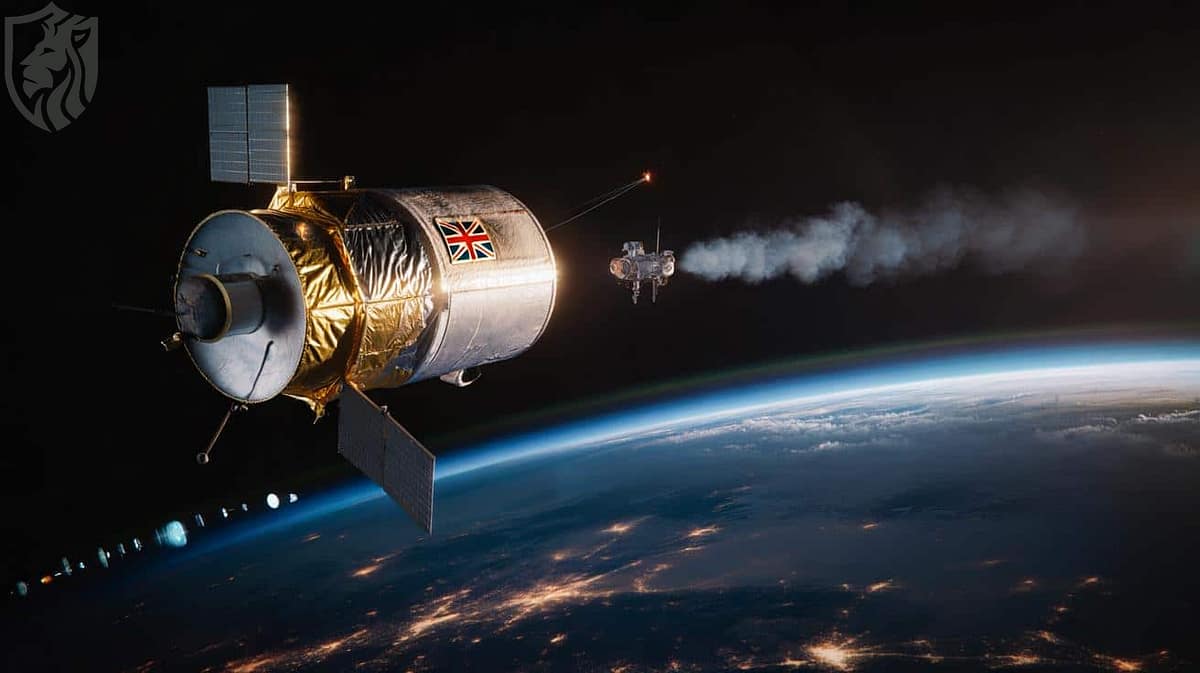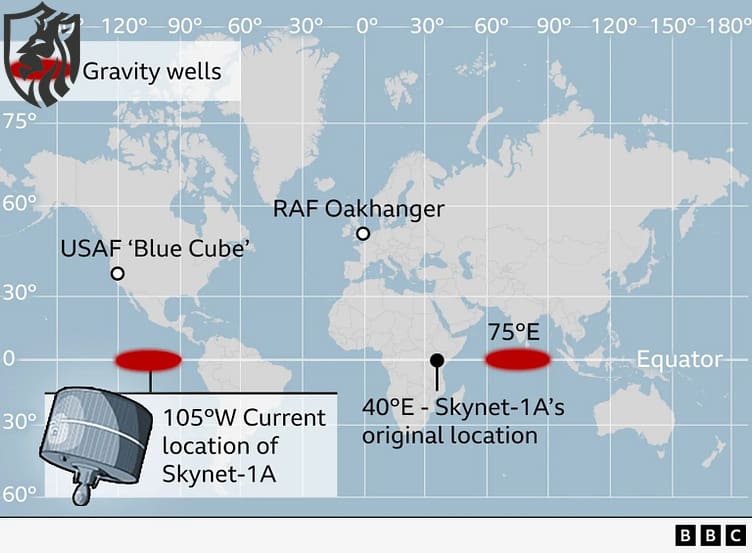
British Skynet-1A Orbit Shift
A 1969 relic military satellite
The Skynet-1A satellite’s orbit change has baffled trackers and defense analysts alike. Launched in 1969 for British forces, the spacecraft should have ended life in a disposal orbit. Instead, it later turned up above the Americas—far from its slot over East Africa.
The change was not natural drift; someone almost certainly commanded the move. BBC reporting highlighted archival hints that the shift likely occurred in the 1970s and may have involved U.S. operators.
What we know—and what we don’t
Skynet-1A was constructed and flight-tested in the United States before being handed to the Royal Air Force. The documents cited by reporters suggest that control briefly returned to the U.S. in June 1977, coinciding with the period when the maneuver most likely occurred.
The change in the orbit of the Skynet-1A satellite therefore points to an intentional, thruster-driven relocation, not a catalogue tidy-up or libration drift. However, the public record fails to identify a definitive author.

Why graveyard orbits matter for GEO safety
At a geostationary altitude, the best practice is clear: operators should boost retired spacecraft a few hundred kilometers to a graveyard orbit. That keeps the protected GEO ring clear for active satellites and reduces collision risk.
These expectations come from IADC guidelines and related standards that explain how to safely dispose of satellites above GEO and make them inactive to prevent future breakups. The change in the orbit of the Skynet-1A satellite appears to have left the craft near operational longitudes rather than in a clean disposal band.
Collision risk in context
GEO is a busy place, and unmanaged hulks raise conjunction screening loads. The U.S. Space Surveillance Network currently tracks over 27,000 catalogued objects in total, underscoring why predictable end-of-life behavior matters.

While that figure reflects mostly LEO, every unplanned resident at GEO complicates operations for commercial and military fleets alike. Therefore, the moving of older spacecraft that have no disposal plan runs against today’s sustainability norms.
Policy implications: then vs. now
Debris protocols were immature in 1969, and disposal expectations were loose. Today, though, governments and industry face tighter norms and growing scrutiny. Regulators and multilateral bodies encourage reliable disposal, transparent custody, and accurate ephemerides.
As a result, the change in orbit of the British Skynet-1A satellite is a relevant example: older satellites can still be risky, so national space operations centres now monitor them and think about ways to fix any issues.
References
- IADC Space Debris Mitigation Guidelines (UNOOSA). unoosa.org
- ESA/ESOC study on GEO end-of-life disposal practice. conference.sdo.esoc.esa.int
- U.S. Space Command notes on tracking >27,000 objects. spacecom.mil
- Round-ups referencing Jonathan Amos’s BBC piece on Skynet-1A. Gizmodo +1







